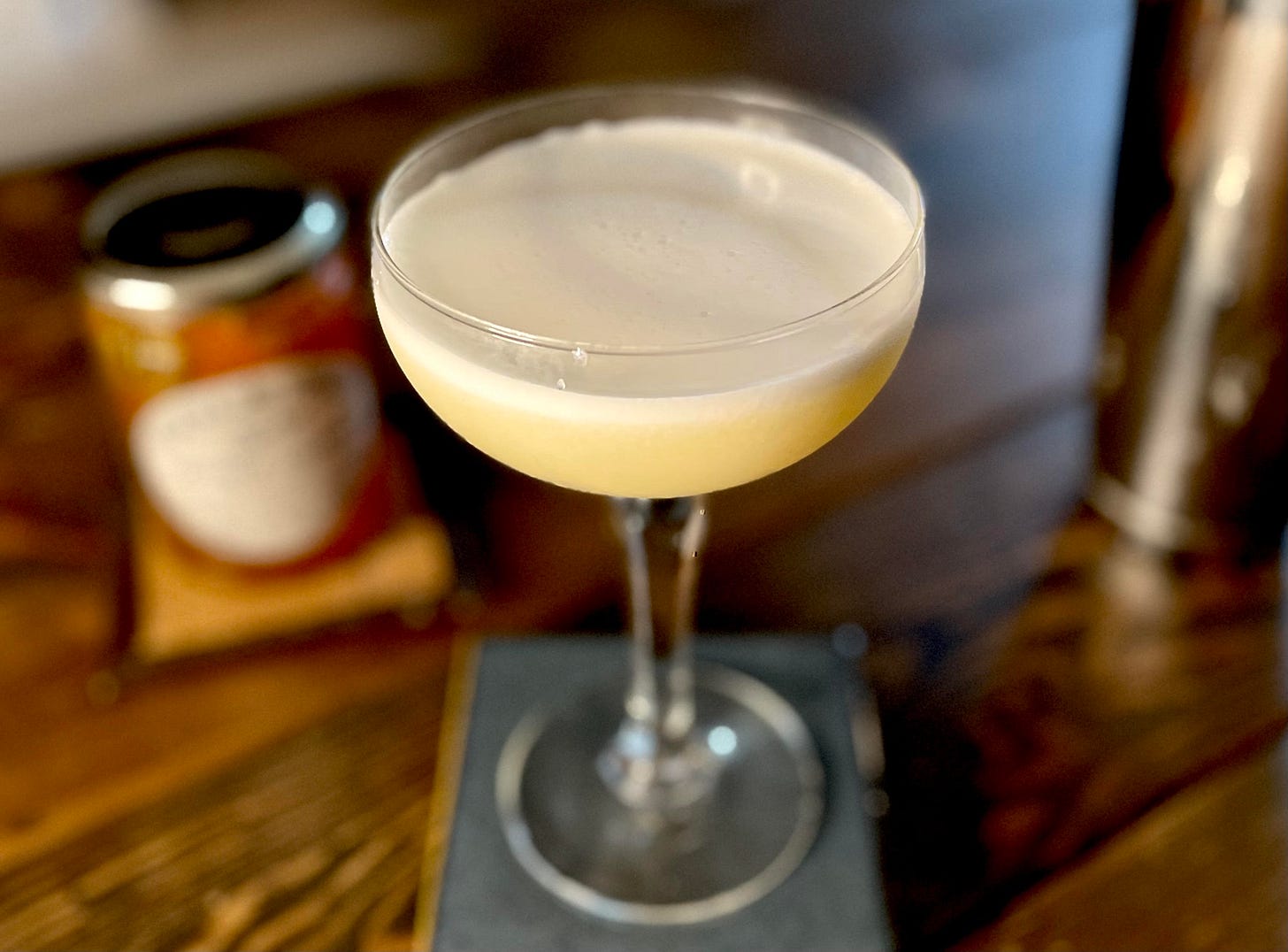The first thing to understand about the Breakfast Martini is that it is not really a Martini.
Sure, it’s a Martini in the sense that it was created during the Martini craze-years of the late 20th century, when large numbers of cocktails were dubbed “Martinis” for marketing purposes, typically because they called for gin or vodka and were served up, in Martini-style glassware — although some X-tini era drinks didn’t even qualify under those loose guidelines. Martini was, for a time, something close to an all-purpose word for “cocktail,” a little like the way “Coke” is sometimes a generic term for soda in parts of the south. (“I’d like a Coke, please.” “Sure, what kind of Coke would you like?”)
The Breakfast Martini is actually a fruited gin sour, much more like an Aviation or a Clover Club or even a Bramble than the stirred-and-boozy dry gin/dry vermouth concoction we now think of as a proper Martini. But it also resembles several non-gin drinks we’ve covered — most notably the Sidecar, but also the Mai Tai, since it employs orange liqueur for part of the sweetener.
Note that I said “part” of the sweetener. That’s because what makes the Breakfast Martini relatively unique is that, in addition to the orange liqueur, it’s also sweetened by an unusual final ingredient: orange marmalade.
That’s right. It’s a citrusy gin cocktail made with marmalade.
This might sound like a gimmick, and, sure, fine, I will admit: It is a gimmick. But it’s not my gimmick. The Breakfast Martini is an old drink from a well-known bartender. And it has survived and traveled in cocktail circles for four decades because, if you make it right, it’s delicious in a way that transcends the gimmick. In a well-made Breakfast Martini, the gimmick ceases to be a gimmick and just becomes a good idea.
It’s also a template for using jam, preserves, and fruit spreads of all kinds in your drinks. So today we’re going to tinker with the Breakfast Martini, and then we’re going to look at more ways to move fancy jelly from your toast to your cocktail glass.
Substitution, Adaptation, Availability
But first, let’s talk about core concepts.
One of the things I like to emphasize in this newsletter is that there are almost always multiple paths to making any given cocktail idea. You can swap fruit syrup for fruit liqueur. You can use a different amaro in your Negroni. You can rotate rye, dark rum, and brandy into many of the same drink formats, and so on and so forth. You don’t end up with the exact same drink; but you end up with something delicious that is based on the same general premise.
Relatedly, I also like to stress substitutability: Home bartenders rarely have access to the hundreds or even thousands of bottles a high-end cocktail bar might have on hand. So it’s helpful to understand how to swap and adapt recipes to what you have around.
Finally, I like to show how common kitchen-cabinet ingredients — salt, honey, maple syrup, strawberries — can be used to improve cocktails. Liquor supplies vary widely by region, and even if you have a great store nearby, you can’t always make it out. So it’s useful to learn to work with what you have in your house, or what you can find easily at a grocery store.
The Breakfast Martini offers a helpful illustration of all three of those concepts.



